-
 +1 +1
+1 +1REPO Mini Games: Challenge Mode with Monsters - Repo games
"REPO Mini Games: Challenge Mode with Monsters" is an exciting collection of mini-games that plunge you into the dark, mysterious universe of REPO! Dozens of thrilling challenges await you, testing your wit, reaction speed, and ability to adapt to unpredictable situations.
-
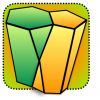 +13 +1
+13 +1Squares and circles are so basic. Get down with this new shape, the scutoid
It's not just a cool "twisted prism," either. The scutoid plays a role in the development of biological organisms. By Adam Rosenberg.
-
 +1 +1
+1 +1Stop celebrating Pi Day, and embrace Tau as the true circle constant
Pi Day is a lie day
-
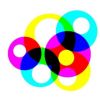 +13 +1
+13 +1What Does Compactness Really Mean?
It took me a long time to understand the mysterious mathematical property of compactness. By Evelyn Lamb.
-
 +11 +1
+11 +1A Defense of the Reality of Time
Time isn’t just another dimension, argues Tim Maudlin. To make his case, he’s had to reinvent geometry. By George Musser.
-
 +26 +1
+26 +1Physicists Uncover Strange Numbers in Particle Collisions
An unexpected connection has emerged between the results of physics experiments and an important, seemingly unrelated set of numbers in pure mathematics. By Kevin Hartnett.
-
 +8 +1
+8 +1A Unified Theory of Randomness
Researchers have uncovered deep connections among different types of random objects, illuminating hidden geometric structures. By Kevin Hartnett.
-
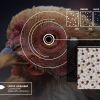 +18 +1
+18 +1A Bird’s-Eye View of Nature’s Hidden Order
Scientists are exploring a mysterious pattern, found in birds’ eyes, boxes of marbles and other surprising places, that is neither regular nor random. By Natalie Wolchover.
-
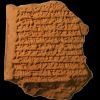 +2 +1
+2 +1Ancient Babylonians Geometrically Traced the Path of Jupiter
For millenia upon millenia, humans knew that certain objects in the sky moved while other stars stood still. These are the objects we now know as planets. But precise calculations on their movements remains a fuzzy area of history. But a new clay tablet from ancient Babylonia shows that they may have used advanced geometrical techniques somewhere between 350 BCE or 50 BCE, pushing back the "discovery" of these principles back as far as 1750 years.
-
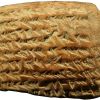 +1 +1
+1 +1Babylonians Were Using Geometry Centuries Earlier Than Thought
As one of the brightest objects in the night sky, the planet Jupiter has been a source of fascination since the dawn of astronomy. Now a cuneiform tablet dating to between 350 and 50 B.C. shows that Babylonians not only tracked Jupiter, they were taking the first steps from geometry toward calculus to figure out the distance it moved across the sky. The discovery suggests that ancient astronomers were using mathematical concepts thought to have...
-
 +21 +1
+21 +1A Geometry of Spatial Illusion
Felice Varini’s environmental paintings can only be experienced in architectural space.
-
 +13 +1
+13 +1Tau vs Pi Smackdown
Steve Mould (tau) and Matt Parker (pi) go head-to-head.
-
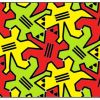 +20 +1
+20 +1Tessellation: The Geometry of Tiles, Honeycombs and M.C. Escher
Tessellation is a repeating pattern of the same shapes without any gaps or overlaps. These patterns are found in nature, used by artists and architects and studied for their mathematical properties.
-
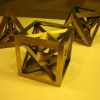 +2 +1
+2 +1After 400 Years, Mathematicians Find a New Class of Solid Shapes
The work of the Greek polymath Plato has kept millions of people busy for millennia. A few among them have been mathematicians who have obsessed about Platonic solids, a class of geometric forms that are highly regular and are commonly found in nature.
-
 +19 +1
+19 +1Pi is Beautiful - Numberphile
Math and art may appear like two disparate fields, but they’ve been in conversation for millennia. One recent example of the synergistic possibilities between the two comes from Canadian scientists Christian Ilies Vasile and Martin Kryzwinski. The pair have utilized the data visualization software Circos to create beautiful and colorful visual representations of mathematical constants π (pi), φ (phi), and eusing transition probabilities and color-coded digits on Archimedean spirals.
Submit a link
Start a discussion




















